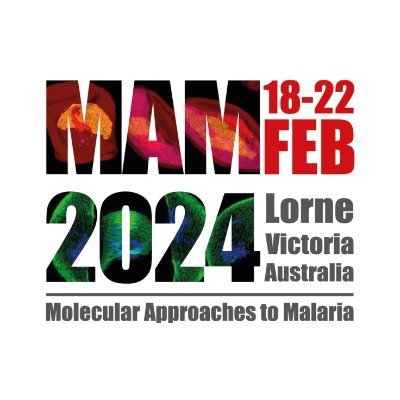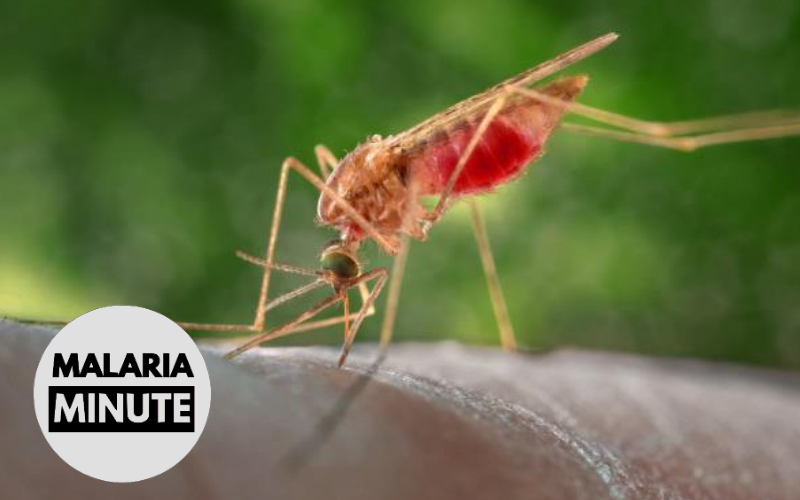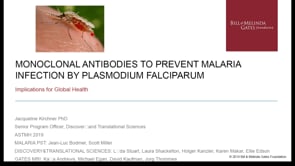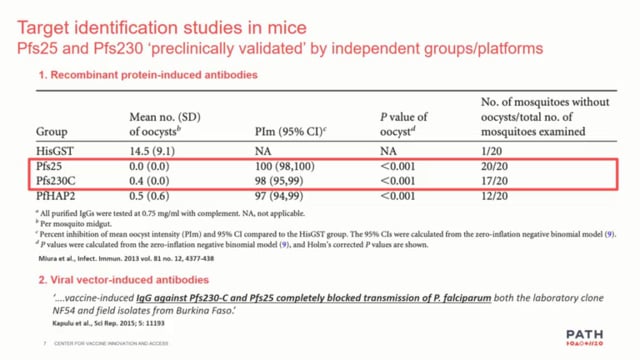Molecular Approaches to Malaria (MAM) Conference – 2024: Day 2
Tuesday, 20th February 2024
Published: 20/02/2024
This report is brought to you by the MESA Correspondents Angela Rumaseb, Katelyn Stanhope, Mohini Anjna Shibu, and Nutpakal Ketprasit. Senior editorial support has been facilitated by Carla Proietti, Emma McHugh and Danushka Marapana.
THEMES: THEMES: Basic Science
MESA Correspondents bring you cutting-edge coverage from the MAM 2024 Conference “Malaria in a Changing World”.
Session 4 – Drug Development and Resistance
Susan Wyllie (University of Dundee, UK) presented advanced methods in antimalarial discovery. Her laboratory employed chemical proteomics approaches to deconvolute irresistible drug targets. Chemical proteomics provide evidence of compound-target interaction. To date, the mode of actions of 45 compound series were identified, with 4 clinical candidates (success rate 85%). For chemical pulldown, phenotypic active compounds underwent Structure-Activity Relationship (SAR) and were attached with linkers that were coupled with beads used to pulldown targets. Wyllie’s team developed expanded forms of this assay to functionalize linkers. Molecules of interest are linked with photo-activatable groups and chemical handles for bioorthogonal reactions such as click chemistry to enable pulldown. She introduced a new generation of functionalized linkers, microMap, to further enrich targets.
Deus Ishengoma (National Institute for Medical Research, Tanzania) presented recent data on the evaluation of artemisinin-based combination therapies (ACTs) for the treatment of uncomplicated Plasmodium falciparum (P. falciparum) malaria in North-western Tanzania. The first K13 mutation in Tanzania was found in 2021. He hypothesised that the mutations of parasites carrying K13 R561H found in the region have arisen on their own as the haplotypes were different from those observed in neighbouring Rwanda. He showed the number of districts with detected resistance increasing from three districts in 2021 to five districts in 2023. While the current treatment of artemisinin combination therapy is still effective, he highlighted the need for ongoing molecular surveillance for drug resistance in other parts of the country.
Belen Tornesi (Medicine for Malaria Venture, Geneva) discussed the use of triple combination therapies to minimise the risk of resistance development and increase drug efficiency. Tornesi talked about a checkerboard method for the identification of pharmacodynamic antimalarial drug-drug interactions (DDIs). The method can be used to identify antagonistic, additive, or synergistic effects between multiple drugs. A triple combination parasite reduction ratio (PRR) can be used to qualitatively assess DDIs. She concluded by stating that these tools are important to determine new drug combinations to combat artemisinin resistance.
Kelly Chibale (University of Cape Town, South Africa) and team investigated dual inhibitors that target Plasmodium kinases (PKs) and hemozoin formation in P. falciparum. There are many advantages to studying PKs since they can be targeted easily, are essential to parasite survival, and are expressed at multiple stages. However, there is a risk of parasite resistance, especially due to mutations in the ATP binding site. It was found that there is a structural similarity between inhibitors of hemozoin formation due to haemoglobin digestion and certain kinases. His lab validated this finding by showing that PI4K inhibitors disrupted and reduced the levels of haemoglobin-derived peptides. This provides a new avenue in antimalarials that couple protein and non-protein targets.
Ashley Vaughan (Seattle Children’s Research Institute, USA) presented genetic crosses in P. falciparum that identified crucial insights into drug resistance mechanisms. His group used bulk segregant analysis (BSA) to identify loci and mutations associated with drug resistance. Genetic crosses showed a blood stage fitness cost associated with mutant pfcrt, and BSA results revealed mutant pfcrt and pfaat1 after the presence of chloroquine drug pressure. Vaughan revealed and discussed the evidence of evolutionary dynamics and fitness trade-offs, particularly in the case of pfaat1 mutations.
Session 5 – Immunity
Gemma Moncunill (Barcelona Institute for Global Health – ISGlobal, Spain) spoke on the newly approved RTS,S/AS01 vaccine recommended by WHO for use in African children. She highlighted the need to improve and develop new vaccines for malaria with high efficacy and durable protection. Moncunill’s team focused on the cellular response to the RTS,S/AS01E vaccine, particularly the role of IgG antibodies. Moncunill utilised samples from children enrolled in an RTS,S/AS01E phase 3 trial from Tanzania and Mozambique. Through the use of cytokine, chemokine and growth factor profiling, they explored how T cell functions in children are altered in response to vaccination. She reported that the protection induced by RTS,S/AE01E vaccination was associated with T-helper 1 cell released cytokines specific to circumsporozoite-protein. Additionally, effector and central memory CD4+ T cells were established after the 3-dose vaccine regime. Finally, Moncunill reported that transcriptomic studies from the vaccine participants reflected that interferon signatures are associated with protection.
Noah Butler (The University of Iowa, USA) talked about the lack of long-term immunity after malaria infections. He showed data suggesting that this may be due to the 60-70% fraction of all activated B cells being short-lived plasmablasts (PB). Deletion of PB enhanced germinal centre (GC) responses and protection. He used a metabolomic approach to understand this in mice infected by Plasmodium yoelii. Butler hypothesised that host metabolism limits long-lasting memory responses and identified that high glutamine availability results in an increase in GC responses and elevated resistance to blood stage Plasmodium infections. This data was supported by the identification of a high magnitude of circulating PB in controlled human malaria infection studies using P. falciparum. They conclude that PB functions as a “nutrient sink” that limits nutrient availability for GC, B cells, and Cd4 T cells and that this may be overcome with exogenous glutamine. He suggested that such malaria induced metabolomic shifts may be due to epigenetic programming.
Brendan McMorran (Australian National University, Australia) talked about host defence antimicrobial peptides (AMPs) with membrane active properties. AMPs kill the parasite by inducing lysis of the digestive vacuole (DV). His team designed PF4 Derived Internalization Peptides (PDIP), which are synthetic peptides with the structural properties of AMPs. Using an array of techniques they were able to prove that PDIP accumulated within the cytosol of intra-erythrocytic parasites very rapidly and did not affect uninfected red blood cells. Additionally, they were able to show that PDIP traverses the multiple membranes surrounding an intra-erythrocytic parasite, namely the host cell plasma membrane, the parasite parasitophorous and plasma membranes to selectively lyse the DV. He suggested that this selectivity may be due to the distinct phospholipid compositions of these membranes. McMorran concluded that PDIP and its drug conjugates were specific for parasitised cells and could be used for cargo delivery such as drugs, antibodies and other molecular probes.
Lynette Beattie (The University of Melbourne, Australia) discussed the immune response generated by intravenous injection with radiation-attenuated Plasmodium sporozoites (RAS), which provides protection against malaria infection via the priming and expansion of antigen-specific CD8+ and CD4+ T cells in the spleen. Beattie determined that γδ T cells played a crucial role within the first 24 hours post-vaccination by producing IL-4, essential for effective CD8 T cell expansion. This was confirmed through various mouse-model experiments including antibody-mediated blockade, bone marrow chimaeras, adoptive transfer, and CRISPR-based gene knockdown. The studies revealed that γδ T cells facilitated CD8 T cell memory generation, which could play a role in improving vaccine responses.
Gonzalo Acevedo (University of California, USA) talked about the role of CD4+ T cells in immune protection in liver stage parasites. His work identified Plasmodium falciparum liver stage antigens and epitopes that trigger T cell immunity. They identified 11 antigen candidates that were recognised by CD4+ T cells from Ugandan children exposed to malaria. From this dataset, they identified an epitope that was detectable in a high percentage among donors from the Program for Resistance, Immunology, Surveillance, and Modeling of Malaria in Uganda (PRISM) study. Acevedo also noted that immune responses against liver stage antigenic peptides were more frequently detected at longer times after a malaria episode.
Hedda Wardemann (German Cancer Research Institute, Germany) discussed the rationale behind improving the current circumsporozoite protein (CSP) based malaria vaccines through cellular and molecular analysis of human anti-PfCSP immune cell responses. In vitro stimulation and expansion-based enrichment of CSP reactive T cells were investigated to identify target epitopes of human anti-PfCSP antibodies. PfCSP is considered an ideal target as CD4 T cells recognise a small polymorphic epitope of PfCSP and lack cross-reactivity. Using this information, the team designed a second generation pre-erythrocytic malaria vaccine that consisted of ferritin-based nanoparticle scaffolds displaying PfCSP repeat epitopes.
Wiebke Nahrendorf (University of Edinburgh, UK) isolated a novel P. vivax clone (PvW1) which was used in an infection model to establish controlled human malaria infection. Nahrendorf utilised this clone to introduce infection into malaria naive individuals and followed their immune responses. It was found that P. vivax-infected participants became febrile at lower parasite densities when compared to P. falciparum-infected participants. For individuals who had not experienced malaria infection before, a large T cell response which resulted in tissue damage was observed. The response was seen to be more dramatic in P. falciparum infections compared to P. vivax. Upon re-infection the severity of the physical responses to infection were diminished, however, parasite densities remained similar. These findings demonstrate that after initial P. vivax infection the immune system is capable of reducing responses which may harm the body.
Session 6 – Life Cycle Biology – Sexual Development
Rita Tewari (University of Nottingham, UK) presented studies on regulatory proteins such as mitotic kinases/phosphatases, cyclins and molecular filaments that play a role in gametogenesis in Plasmodium berghei. First, she talked about a type of mitotic kinase called Nima-like kinases (Nek). Nek1 was found to localise to the outer centriolar microtubule organising centre (MTOC) during male gametogenesis. Knockdown studies of Nek1 showed that it was essential for male gametogenesis and parasite transmission. The team showed that Nek1 was important for MTOC splitting and chromosome segregation and that it partially co-localized with centrin but not Ndc80 (a component of the kinetochore). In the later part of her talk, Tewari briefly showed data on the study of another mitotic kinase, Aurora kinase 2 (ARK2), which was similar to Ndc80. Despite the lack of ARK2 the parasites still produced male gametes, however, the presence of ARK2 blocked transmission to oocyst stages.
Oliver Billker (Umeå University, Sweden) talked about using stage-specific gene expression data to understand sexual reproduction in Plasmodium berghei. Billker and colleagues used barcoded PlasmoGEM vectors to create mutant parasite lines that only produce single sex gametocytes. They identified over 12,000 sex-specific phenotypes from 3000 mutants. From this data, they were able to describe and assign functions to hundreds of previously unstudied genes that regulate fertility. They further studied 125 male genes associated with egress and motility. Interestingly, a SUN protein was identified and found to link the nucleus to axonemes. He introduced a strategy to study the diploid stage of the parasites by using Cas9 homing technology. Pilot screens identified new homozygous oocyst phenotypes. As an example, he briefly mentioned a P. berghei gene which was identified to be a CRT homolog in oocysts.
Danushka Marapana (Walter and Eliza Hall Institute, Australia) talked of a study conducted in Toxoplasma where a CRISPR screen identified a multi-component E3 ubiquitin ligase, which was named glucose induced degradation deficient (GID) complex. This complex was critical for parasite transition from the tachyzoite to bradyzoite stages. Homologs of the GID complex components were identified in P. falciparum. PfGID was localised to the nucleus and cytoplasm. From gene knockout studies it was found that PfGID was not essential for asexual development or sexual commitment, yet arrested development of the parasites and prevented parasite transmission. The team performed various transcriptomic and whole-cell proteomic analyses to understand the function of PfGID. They were also able to identify a few potential substrates ubiquitinated by PfGID.
Michaela Petter (University Hospital Erlangen, Germany) gave a talk on epigenetic regulation mechanisms by bromodomain proteins in Plasmodium falciparum. The talk was focused on bromodomain protein 1 (BDP1) which is a protein highly expressed throughout gametocytogenesis. Conditional knockdown of BDP1 resulted in a reduction in gametocyte rate, with the resulting parasites displaying abnormal morphology. They observed that a lack of BDP1 led to progressive gene deregulation. Chip-seq and RNA seq analyses revealed that there was an increase in antigenic variation in the BDP1 knockdown cells. The team also identified a PfBDP1-specific inhibitor which affects both asexual and sexual parasite stages. The conclusion was that BDP1 co-regulates genes in the early gametocyte stage.
Björn Kafsack (Cornell University, USA) gave a talk on the investigation of Homeodomain-like Protein 1 (HDP1). Kafsack’s lab found that HDP1 acted as a nuclear DNA-binding protein which regulates gene expression during the early development of P. falciparum gametocytes. Upon knocking out the HDP1 gene, it was found that this loss of HDP1 resulted in the failure to upregulate genes required in early gametocytes, indicating its role as a positive transcription regulator. To further elucidate the protein function, Kafsack performed targeted truncations and deletions within HDP1. This identified that one area of the gene is responsible for the development of all gametocytes, whereas the opposite end is distinctly responsible for male gametocyte development.
Gigliola Zanghi (Center for Global Infectious Disease Research, USA) and team combined GFP-tagged parasites and transcriptomics to study genes associated with liver stage development. This study utilised a human liver-chimeric mouse model and a PfNF54 parasite line to analyse P. falciparum infected hepatocytes. Using RNA-seq analysis they revealed that translation regulation is required for the transformation from sporozoites to liver stage, alongside sustaining factors such as fatty acid biosynthesis and iron metabolism. The P. falciparum transcriptome was compared to Plasmodium vivax liver stage gene expression profiles, which showed conservation of liver-stage specific genes. Interestingly, Zanghi identified that P. falciparum parasites are not sexually committed at the liver stage in contrast to P.vivax. Furthermore, components of the export translocon PTEX are expressed during the liver stage of P. falciparum.
Scott Lindner (Pennsylvania State University, USA) worked on the mosquito stage of parasite development. His work was focused on identifying proteins required for host-to-vector transmission. RNA-seq data showed that female gametocytes repress certain mRNA transcripts in anticipation for protein production during mosquito stages. This process involved DDX6 (DOZI), LSM14 (CITH), and ALBA proteins which form a repressive complex which stabilises certain mRNA transcripts. Lindner utilised comparative transcriptomics and proteomics across host-to-vector transmission in female P. yoelii parasites to identify a large amount of transcripts which were essential for zygote function and released for translation post-fertilization. It was also found that certain transcripts remained repressed beyond the ookinete stage.
This report is brought to you by the MESA Correspondents Angela Rumaseb, Katelyn Stanhope, Mohini Anjna Shibu and Nutpakal Ketprasit. Senior editorial support has been facilitated by Carla Proietti, Emma McHugh and Danushka Marapana.
Published: 20/02/2024
This report is brought to you by the MESA Correspondents Angela Rumaseb, Katelyn Stanhope, Mohini Anjna Shibu, and Nutpakal Ketprasit. Senior editorial support has been facilitated by Carla Proietti, Emma McHugh and Danushka Marapana.
THEMES: Basic Science



